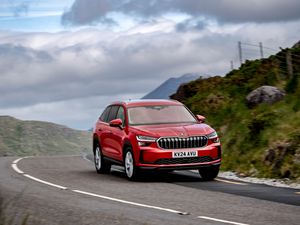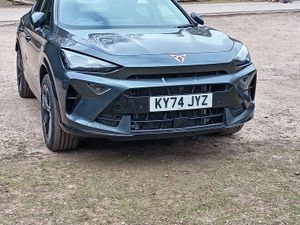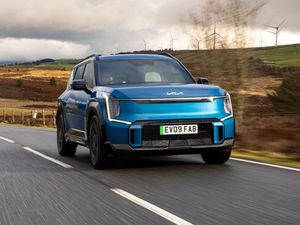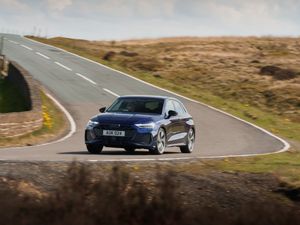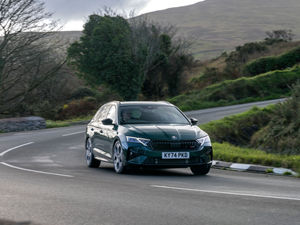First drive: The Hyundai Kona Electric could be the most compelling EV yet
Hyundai has slotted an electric powertrain into its Kona compact SUV. Tom Wiltshire heads to Oslo to take a look
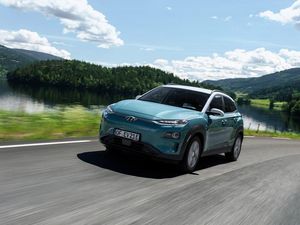
What is it?

As combustion-engined cars battle for ultimate fuel efficiency, electric vehicles fight it out for the longest range. It’s a constant bugbear with electric vehicles – after all, when you run out of fuel in a petrol car, filling up only takes a minute, while in an electric car you’re looking at a much longer wait. This gives rise to ‘range anxiety’ – which even best-sellers such as the Nissan Leaf suffer from.
Enter the Hyundai Kona Electric. It’s a fully electrified compact SUV with a class-leading range of up to 300 miles on a charge, but despite this it’s priced to compete with the Leaf. Is it too good to be true?
What’s new?

The Kona platform may be offered with petrol and diesel engines, but it was designed from the outset to accommodate an electric powertrain. As such, the integration is slick – there’s no compromise in boot space or rear passenger room, and the batteries are stored low in the car’s floor for optimal weight distribution.
In the transition the Kona’s gained a new, aerodynamic front grille which conceals the charging socket, and it’s made the most of losing a mechanical gear linkage by adding in a raised centre console with fly-by-wire drive selection and extra storage. There are also some unique paint colours and new alloy wheels.
What’s under the bonnet?

The Kona is available with a choice of two battery packs. There’s a lesser 39kWh battery pack, mated to a 134bhp electric motor and capable of 194 miles on a charge, but we suspect most will opt for the heftier 64kWh battery which comes with that headline range.
It offers good performance thanks to a 201bhp power output and bags of instantaneous electric torque. As is the nature of electric vehicles, power tails off over 60mph – which means motorway cruising is less effortless than in a similarly powered diesel – but it’s really zippy from a standstill. In fact, it’s a little too zippy for the chassis to handle – the Kona Electric is prone to torque steer under acceleration and wheelspin when setting off.
The powertrain also feels as if it could do with a little fine-tuning, especially the transition between regenerative and conventional braking, which can be a little jarring.
What’s it like to drive?

For nipping around town the Kona Electric is absolutely ideal, with reasonably precise steering and a low centre of gravity making tight cornering easy. The stylised SUV body with its slightly raised driving position also improves visibility out the front, though thick C-pillars do hinder the view out of the back.
The Kona Electric is quite a heavy car thanks to all those batteries, and that weight numbs the handling somewhat. Of course, this won’t matter to most who simply want an electric car as an appliance to move about in.
Perhaps most interestingly, the Kona Electric is still fun to drive. Despite the dull handling, the point-and-squirt-ability of the electric drivetrain means you’re likely to still have a grin on your face.
How does it look?

As befits a modern electric vehicle, the Kona has a few futuristic touches to ensure it stands out from its petrol and diesel rivals. The front grille has gone, replaced by a solid facia dappled with a diamond pattern. A horizontal bar links the daytime running lights, though Hyundai still positions the headlamps underneath in an ‘upside-down’ arrangement.
The rest of the car is fairly standard Kona, which means it retains a familiar compact SUV shape. It does retain the standard car’s rather jarring rear light arrangement, but happily there are still some nods to SUV utility – including roof bars and black plastic cladding around the wheelarches.
What’s it like inside?

The Kona’s centre console has had a makeover. With no physical gear linkage to accommodate, the whole arrangement has been raised up to bring key functions closer to the driver, give a cockpit-like feeling to the driving experience and to provide storage underneath it.
Drive is now selected by individual buttons, which we’re not the biggest fans of – they take up as much space as a physical shift knob would but are less intuitive to use. We also dislike the shiny silver plastic Hyundai’s added, as it makes the car feel very cheap inside.
However, there’s plenty of space and Hyundai’s instrumentation and major controls remain some of the most intuitive in the business.
What’s the spec like?

At over £30,000, the Kona Electric is strong money for a compact Hyundai – but the brand’s added in enough tech to compensate. There’s adaptive cruise control, blind spot warning, lane keeping assist and a reversing camera all as standard on the safety front, while inside you get climate control, heated and ventilated front seats, leather upholstery and an eight-inch touchscreen infotainment system with Apple CarPlay and Android Auto.

